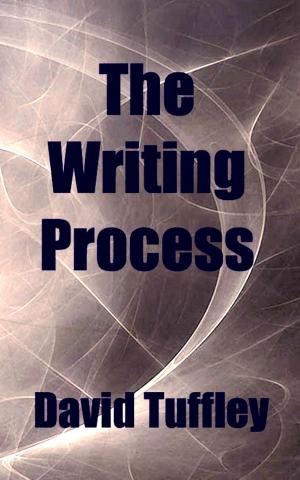| Author: | David Tuffley | ISBN: | 9781458016843 |
| Publisher: | Altiora Publications | Publication: | March 27, 2011 |
| Imprint: | Smashwords Edition | Language: | English |
| Author: | David Tuffley |
| ISBN: | 9781458016843 |
| Publisher: | Altiora Publications |
| Publication: | March 27, 2011 |
| Imprint: | Smashwords Edition |
| Language: | English |
There are no 'official' rules governing electronic communication. While there have been attempts to establish one standard or another as the default, there is no common agreement. So beware people telling you there is one right way, they are assuming too much. As a general rule though, netiquette involves the same principles as plain old etiquette -- basic courtesy, respect and ethics. Treat people the way you would want to be treated yourself.
By following the principles outlined below, the recipient of your email will be more likely to read and act, if not be favorably impressed by your message:
Subject line to summarise the message. Make the Subject line summarise the body of the e-mail. Ask yourself, 'will the recipient(s) know what this e-mail is about'. For example, Instead of Subject: Exam, say Subject: Location of 1508INT Exam, 23 July 2011.
Don't assume the recipient knows the background. Include enough contextual information at the beginning of the e-mail for the recipient to know what the matter is about. If in doubt, put background information in. For example, don't say can I have an extension for my assignment?, instead say I refer to the CIT3622 assignment 1 that I handed in late. I was ill and have a doctor's certificate. May I ask for an extension on the basis that I was too ill to do it on time?
Keep it concise. Keep messages brief and to the point, but not so brief that it causes the problem outlined in the previous point. This includes deleting any irrelevant text when an email has been back and forth several times. No-one wants to scroll down through pages of text in order to reach the message they want to read. If the sense of the email will be lost by deleting that text, however, leave it in.
Reply within 24 hours. Try to reply within 24 hours, less if possible. In fact, get in the habit of replying immediately -- it is the polite thing to do, and the recipient will appreciate a prompt reply. It also makes you look efficient. The longer you leave it to reply, the more likely you will forget or have too big a log-jam of unanswered email.
Allow time for a reply. E-mail messages are not usually required to be answered immediately, though it is good practice if you do. Before sending a reminder, allow some time for a response, some times even a few days. Not everyone is online 24 hours a day.
Use the BCC field when sending bulk email. If you're sending email to a whole list of people, put their email addresses in the BCC field. That way, the privacy of the recipient is respected, and spammers cannot harvest the email addresses for their dastardly purposes.
There are no 'official' rules governing electronic communication. While there have been attempts to establish one standard or another as the default, there is no common agreement. So beware people telling you there is one right way, they are assuming too much. As a general rule though, netiquette involves the same principles as plain old etiquette -- basic courtesy, respect and ethics. Treat people the way you would want to be treated yourself.
By following the principles outlined below, the recipient of your email will be more likely to read and act, if not be favorably impressed by your message:
Subject line to summarise the message. Make the Subject line summarise the body of the e-mail. Ask yourself, 'will the recipient(s) know what this e-mail is about'. For example, Instead of Subject: Exam, say Subject: Location of 1508INT Exam, 23 July 2011.
Don't assume the recipient knows the background. Include enough contextual information at the beginning of the e-mail for the recipient to know what the matter is about. If in doubt, put background information in. For example, don't say can I have an extension for my assignment?, instead say I refer to the CIT3622 assignment 1 that I handed in late. I was ill and have a doctor's certificate. May I ask for an extension on the basis that I was too ill to do it on time?
Keep it concise. Keep messages brief and to the point, but not so brief that it causes the problem outlined in the previous point. This includes deleting any irrelevant text when an email has been back and forth several times. No-one wants to scroll down through pages of text in order to reach the message they want to read. If the sense of the email will be lost by deleting that text, however, leave it in.
Reply within 24 hours. Try to reply within 24 hours, less if possible. In fact, get in the habit of replying immediately -- it is the polite thing to do, and the recipient will appreciate a prompt reply. It also makes you look efficient. The longer you leave it to reply, the more likely you will forget or have too big a log-jam of unanswered email.
Allow time for a reply. E-mail messages are not usually required to be answered immediately, though it is good practice if you do. Before sending a reminder, allow some time for a response, some times even a few days. Not everyone is online 24 hours a day.
Use the BCC field when sending bulk email. If you're sending email to a whole list of people, put their email addresses in the BCC field. That way, the privacy of the recipient is respected, and spammers cannot harvest the email addresses for their dastardly purposes.















